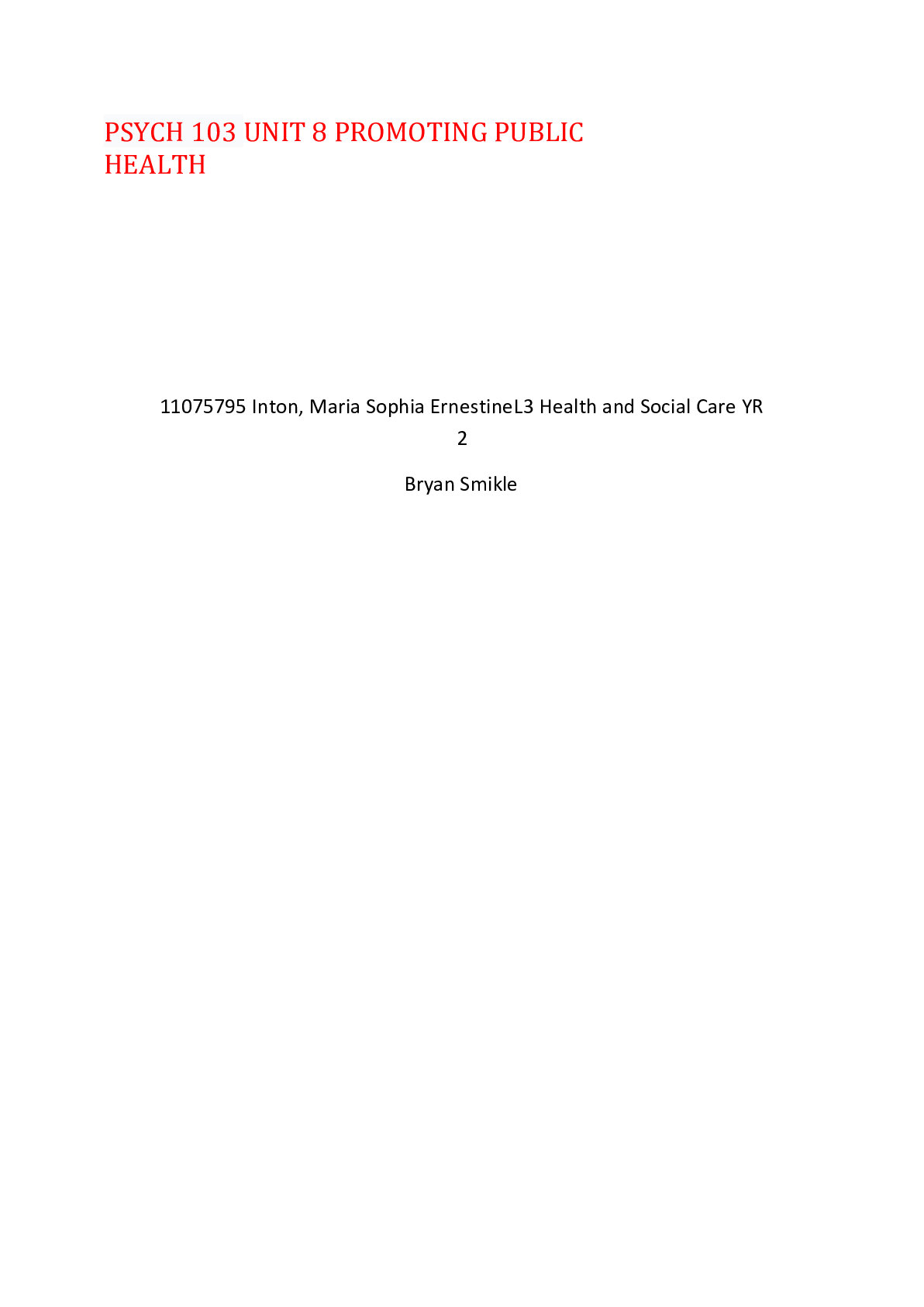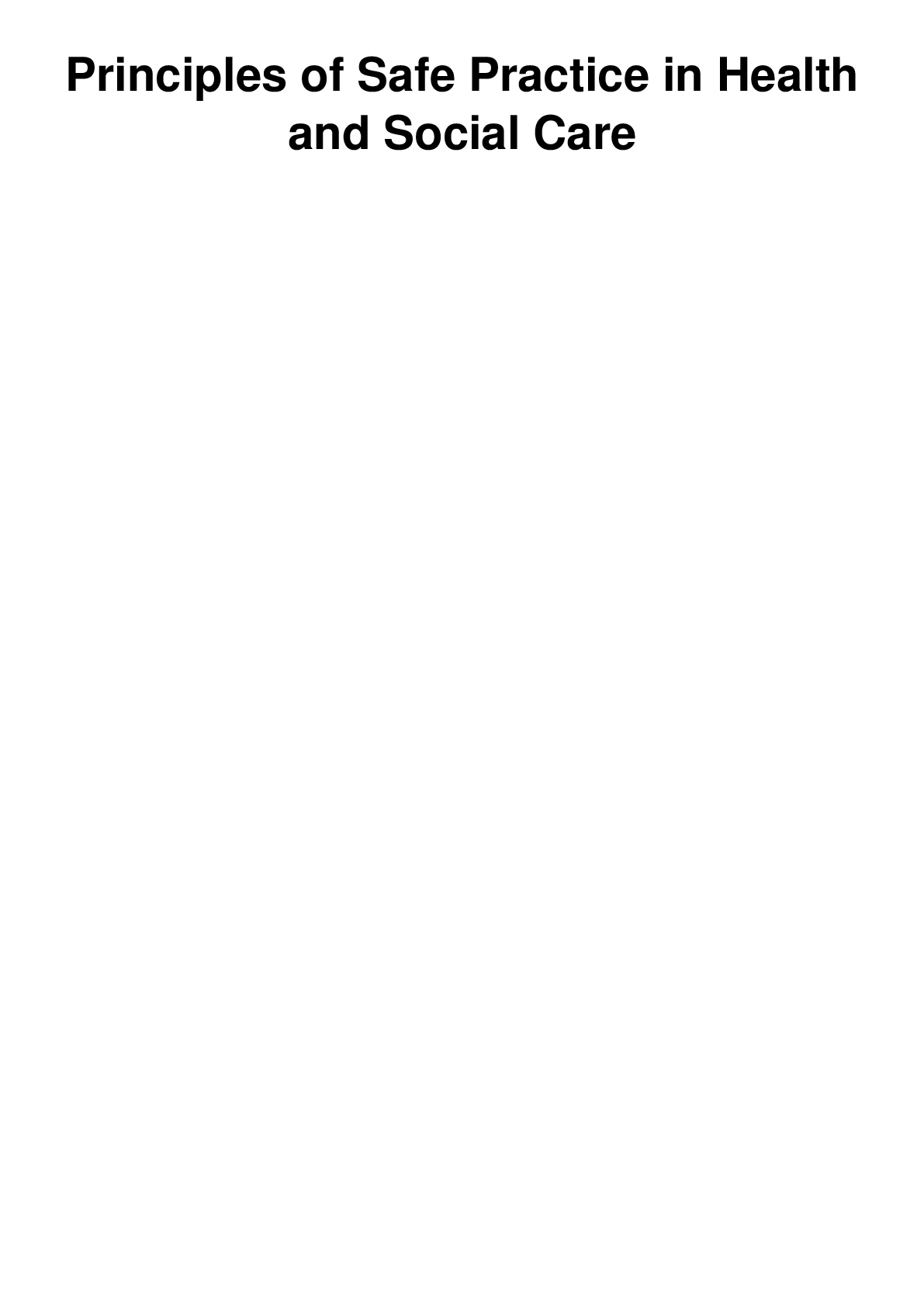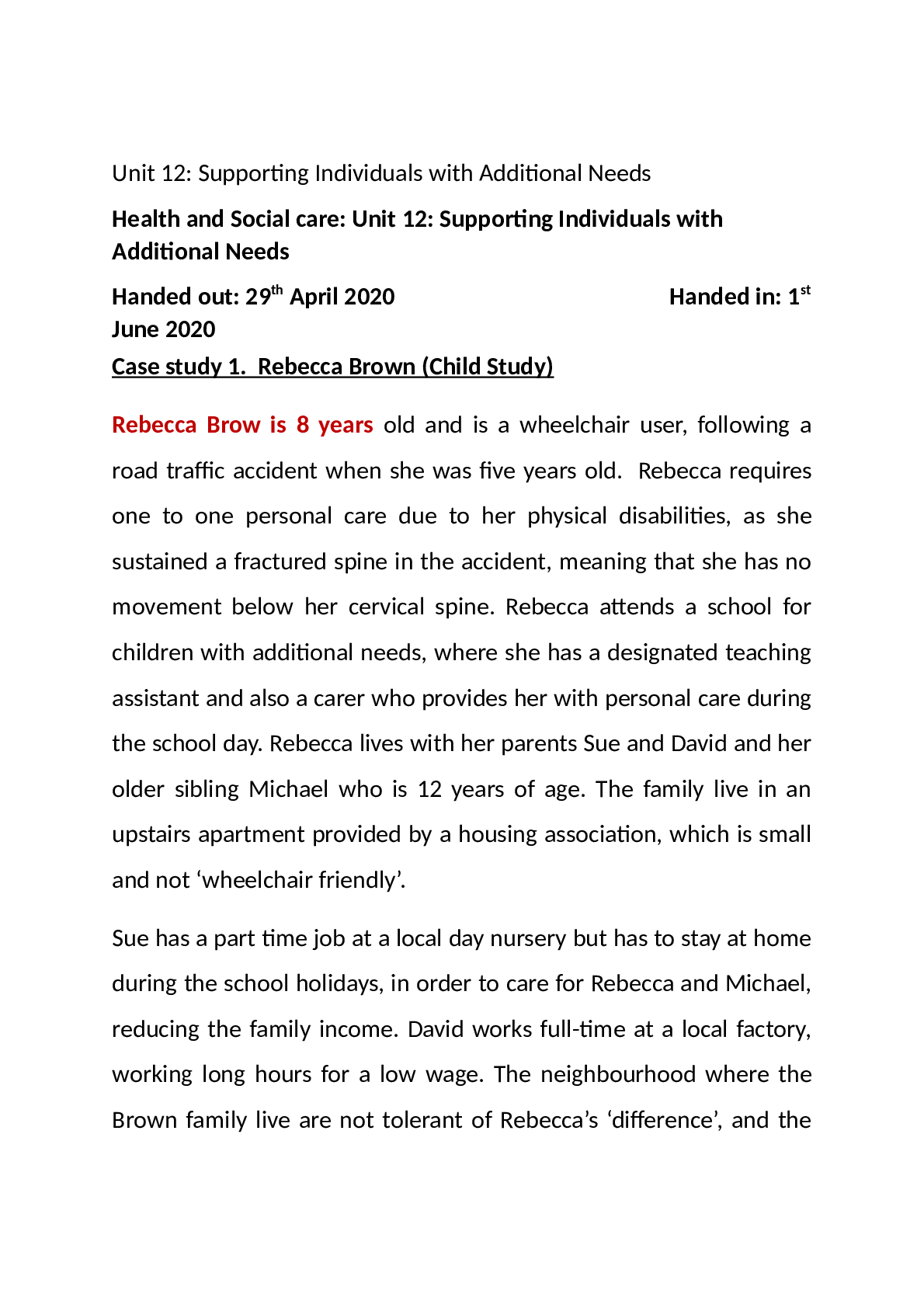Health Care > CASE STUDY > UNIT 8 Assignment (Principles of Safe Practice in Health and Social Care) (All)
UNIT 8 Assignment (Principles of Safe Practice in Health and Social Care)
Document Content and Description Below
What is Public Health? According to Smith and Jacobson, 1988, public health ‘involves the promotion of health, the prevention of disease, the treatment of illness, the care of those who are disabl... ed, and the continuous development of the technical and social means for the pursuit of these objectives’. During the past years in Victorian times, outbreaks of cholera, typhoid and influenza killed thousands and the Great Stink of London, when raw sewage filled the Thames, forced politicians to move Parliament. Edwin Chadwick demonstrated the link between poor living conditions and disease and reduced life expectancy. The government realised that they would have to organise a public approach to health and from these beginnings, public health was born. In 1842, Edwin Chadwick one of the Poor Law Commissioners published a report called ‘Report on the Sanitary Conditions of the Labouring Population of Great Britain’ highlighting the dreadful conditions people were living in. People refused to work and go outside due to infectious diseases, most of them were from working class. Due to the little attention given by the government to controlling diseases, he concluded that it would be cheaper to spend local taxes on improving housing and hygiene instead of running workhouses. The report also suggested the provision of access to clean water, removal of sewage and rubbish from the streets. However, the report also received negative comments from the middle-class taxpayers saying they ‘did not see why their money should be spent on better living conditions for the poor who did not pay anything towards the improvements themselves’. In 1854, there was another outbreak of cholera. The outbreak convinced Dr John Snow to investigate a theory. He concluded that cholera was spread through water. He marked on a map all the deaths in one particular area of London’s East end and later discovered that there was a clear concentration of deaths around a water pump on Broad Street. Snow had the handle removed so people couldn’t use the infected water. As a result, the number of deaths fell dramatically. Snow’s investigation had a massive impact on public health as it helped people change their minds about Chadwick’s suggestion of providing clean water. In 1942, the Beveridge Report produced by Sir William Beveridge identified five ‘Evil Giants’ in society. These are as follows: Squalor (Dirtiness), Ignorance, Want (Poverty), Idleness and Disease. These has impacted most of the poor people negatively. The report was published during the World War II, but in 1945 when the war ended, the government decided to act on Beveridge’s suggestions. In order to overcome (1) Squalor, they built council houses with bathrooms and flushing toilets. To overcome (2) Ignorance, they introduced free education up to the age of 15. To overcome (3) Poverty, the government introduced a system of benefits. People in work had to contribute, as did employers, but in exchange people got sick pay when they were too ill to work. To overcome (4) Idleness, the government introduced Labour Exchanges, now called Job Centres. Finally to overcome (5) Disease, they set up the National health Service (NHS). In 1875, an act was promoted to ensure that local councils provide the best for people’s health. This includes the provision of clean water, public toilets, rubbish removal, sewers and drains. By then, councils also managed to check food shops around the areas to ensure food safety, ensuring quality of new housing and enforcing laws against polluting rivers. As technology and the understanding of disease control were refined, interventions against health threats were developed by public organisations and agencies. Public authorities introduced new tasks including sanitation, immunization, regulation, health education, and personal health care to the public. EDWIN CHADWICK (1800-1890) Photo reference: https://en.wikipedia.org/wiki/Edwin_Chadwick JOHN SNOW (1813-1858) Photo reference: https://en.wikipedia.org/wiki/John_Snow (AP1) Explain the strategies used to develop public health policy in order for it to meet its aims. It is not easy to handle a large number of population receiving healthcare needs which is why planning and developing health policies and procedures is very necessary. To ensure that people in the United Kingdom would receive free healthcare that meets each and every individual’s needs, the government launched the National Health Services (NHS) on July 1948. It is the first healthcare service in the world that is available to all regardless the wealth. It started to provide a more accessible health service to meet the aim of public health policy by ensuring fair and impartial health services. The NHS remains free at the point of use for all UK residents. This currently stands at more than 64.6 million people in the UK and 54.3 million people in England alone. As the demography of a certain area changes from time to time, public health policy needs to be responsive to meet the needs of the population. The government needs to gather statistical data and commission reports into current trends in health within the nation as well as attempting to predict future developments in the health status of the nation. Lifestyle choices, unemployment, education, housing, prevalence of disease and poverty: all of these factors that influence health and its informations help to shape the planning process for health provision. During and ten years after the Second World War, extreme shortage on food occurred which caused for the ‘food rationing’ to be implemented. Health officials concluded that people’s health improved due to the food rationing. By that time, local authorities started to help and support illness and conditions brought on by war through introducing health care departments such as, Children’s Mental Health Department. In 1946, the World Health Organization (WHO) introduced health as a separate issue in which governments must be involved, to the benefit of people’s physical, mental and social well being, and not just for treating diseases. The role of the public in raising awareness continues to be active in mid 1970s and 1980s. Due to prevalence of social influence such as the media and peer pressure, public health policy needs to become more responsive which led to raising awareness in certain health issues such as campaigns and advertisements. It was not until 1974 that the NHS was responsible for the majority of public health. Along with that, the NHS was being established, spreading across the nation and reclaiming [Show More]
Last updated: 1 year ago
Preview 1 out of 53 pages

Buy this document to get the full access instantly
Instant Download Access after purchase
Add to cartInstant download
We Accept:

Also available in bundle (1)

Principles of Safe Practice in Health and Social Care(Unit 14,Unit 12,UNIT 5,UNIT 7 )All Together
Principles of Safe Practice in Health and Social Care(Unit 14, Unit 12, UNIT 5, UNIT 7 )All Together
By Hannington 3 years ago
$22
5
Reviews( 0 )
$14.00
Document information
Connected school, study & course
About the document
Uploaded On
May 03, 2021
Number of pages
53
Written in
Additional information
This document has been written for:
Uploaded
May 03, 2021
Downloads
0
Views
74







.png)






